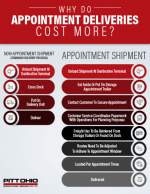ATA: Truck Driver Shortage Analysis 2019
In this analysis, we focus only on drivers of Class 8 tractor-trailers, this is where the bulk of the truck driver shortage prevails.
During the past 15 years, the trucking industry has struggled with a shortage of truck drivers.
The shortfall was first documented in a 2005 report.
At that time, the shortage was roughly 20,000.
During the Great Recession that started in 2008, the driver shortage was erased, but only because industry volumes plummeted, resulting in fewer drivers needed.
However, as industry volumes began to recover in 2011, the shortage slowly returned.
The driver market continued to tighten, and the shortage skyrocketed to roughly 50,700 by 2017.
In 2018, the industry suffered a greater shortage, largely due to robust industry freight volumes.
As this report highlights, the driver shortfall is expected to fall slightly by the end of 2019 from a combination of slower economic growth and a small bump in supply.
However, the combination of a tight labor market and an aging truck driver population is expected to keep the shortage near its peak in 2018.
There are many reasons for the current driver shortage, but one of the largest factors is the relatively high average age of the existing workforce.
According to surveys by ATA, the average driver age in the for-hire over-the-road truckload industry is 46. Other trucking sectors have an even higher average age, like less-than-truckload and private carriers. While the driver shortage is not as acute in these sectors as it is in the over-the-road truckload sector, the high average age still affects the overall shortage. As these two groups see drivers retire, they often go into the for-hire truckload labor pool to recruit drivers.
Additionally, the industry has historically struggled to attract all segments of the population as just 6.6% of truck drivers in 2018 were women. This percentage hasn’t changed much historically, ranging from 4.5% to 6.6% over the last 18 years. In 2018, 40.4% of drivers were minorities, which has jumped 13.8 percentage points from 26.6% in 2001.3
Today, motor carriers4 struggle to find enough qualified drivers, which makes the impact of the shortage seem much worse than the numbers in this report.
Many carriers, despite being short drivers, are highly selective in hiring drivers because they have made safety and professionalism high priorities.
What’s Related




Favorites





